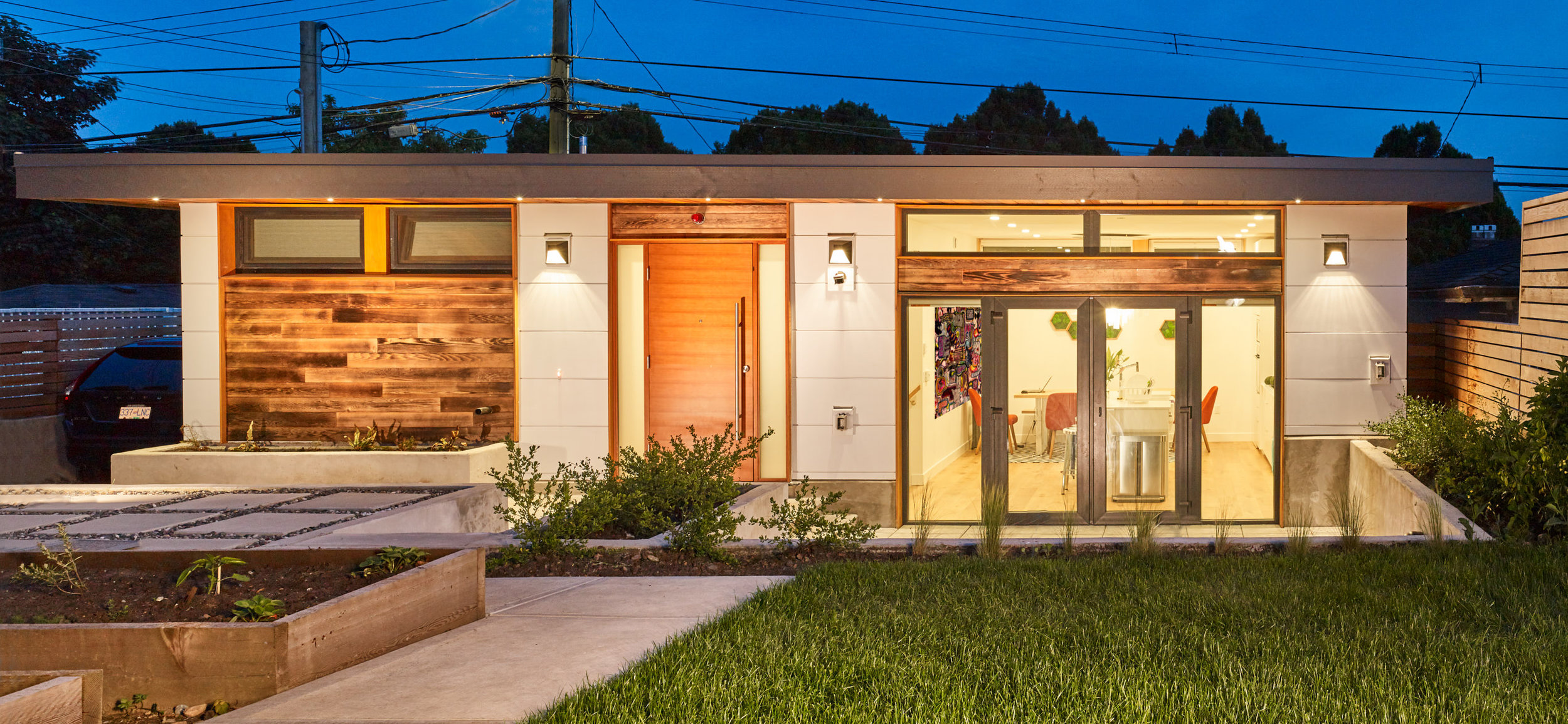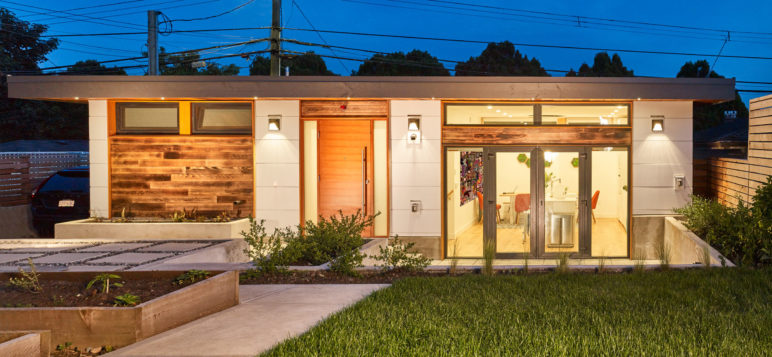On Thursday, Seattle published its Final Environmental Impact Statement (FEIS) on loosening regulations on mother-in-law apartments and backyard cottages—accessory dwelling units (ADUs) in wonkspeak.
The endorsed set of rule changes gets most things right, but also comes up short in a few ways.
If you haven’t been following the drama, this is the latest chapter of Seattle’s effort to make it easier to build ADUs and help address the city’s affordability crunch. The changes have been stalled for over two years by the Queen Anne Community Council’s legal appeal that forced the city to conduct an exhaustive environmental review. The new FEIS presents the final results of that review, along with a recommendation known as the “preferred alternative.”
Here’s my cheat sheet on that preferred alternative, elaboration to follow:
The good:
- Allowance for two ADUs per lot, with the option that both ADUs can be mother-in-laws—that is, ADUs attached to the main house (AADUs)
- Removal of off-street parking requirements for ADUs
- Elimination of the requirement for the owner to live on site if a house has an ADU
- Allowance for one to two additional feet of height for detached ADUs (DADUs) that incorporate green building features
- No mandatory housing affordability requirements on ADUs
The good-but-wish-it-went-further:
- Increase of DADU maximum floor area from 800 to 1,000 square feet
- Reduction of the minimum lot size for DADUs from 4,000 to 3,200 square feet
- Allowance for one to three feet of additional DADU height, depending on lot width
- Increase of the maximum number of unrelated residents allowed on one lot from 8 to 12
- Increase of rear yard lot coverage limit from 40 to 60 percent for DADUs no taller than 15 feet
- Allowance for ADU entries on any façade, with minimum distance of 10 feet from property lines
The bad:
- New prohibition on the construction of a second ADU unless the property has been in the same ownership for at least one year
The wild card:
- A new and wholly unprecedented size limit on all new houses built in single-family zones citywide, whether or not an ADU is involved
First, regarding that wild card: it’s radical! It would set the maximum size of any newly constructed house to whichever is greater: 2,500 square feet, or a floor-area-ratio of 0.5 (means that the floor area of the house can be no more than half the square footage of the lot). That’s a big cut: today’s rules theoretically permit a house up to 5,250 square feet on a 5,000 square foot lot (this article has some good illustrations). The size limit applies to house additions too, so if you’ve got a house that already exceeds that limit, sorry, no addition allowed.
By capping the size, and therefore the value, of new houses, the city hopes to make it less financially attractive to teardown a modest existing house and replace it with an expensive new one—the absolute worst outcome for housing affordability. The square footage of ADUs would be exempt from the size limit, incentivizing their construction instead. Good intentions aside, it’s hard to imagine that such a massive reduction in the value of single-family properties citywide—a “downzone”—won’t be met with a serious backlash from homeowners.
My main beef with the preferred alternative:
While the preferred alternative would remove the owner occupancy requirement—a much needed fix, as discussed here—it adds the unprecedented requirement for one year of uninterrupted ownership before a second ADU is permitted. Reading between the lines, it’s to appease those concerned that without such a restraint the liberalization would unleash a tsunami of teardowns replaced by new houses with two ADUs—even though the city’s own analysis showed that that outcome is unlikely. This ownership restriction will hold back the creation of ADUs while providing zero compensating benefit.
How I wish it went further:
- Why not also allow the option of two DADUs? The same size limits that apply to one DADU would apply to two DADUs cumulatively, so the built structure in the backyard couldn’t be any bigger and would cause no additional impacts.
- Why limit new AADUs to 1,000 square feet when the proposal would allow AADUs larger than that in houses built before 2018? Further, why not let owners dedicate as much of their house as they want to an AADU, as long as it remains smaller than the primary home, no matter what the house’s age? Even further, why not let DADUs exceed 1,000 square feet also? Height, lot coverage, and setback restrictions will suffice prevent DADUs from getting too bulky, and some lots may have plenty of room.
- Why stop at a 3,200 square foot minimum lot size for DADUs? Eliminating the limit all together would only modestly expand the number of lots that could accommodate a DADU. Here again, in most cases lot coverage limits and setback requirements for DADUs provide sufficient regulation and would preclude their construction on smaller lots anyway. But some small lots—ones with very small houses, for example—could fit a DADU. Why not let them?
- Why not extend the allowance for 60% rear lot coverage to 2-story DADUs? Limits on total lot coverage, DADU floor area, and setbacks are sufficient to keep the DADU from becoming excessively big relative to the back yard. Further: since ADUs enable more homes on less land, why not raise the allowable coverage for the whole lot?
- Why reduce DADU height on narrow lots? It won’t solve the perceived problem of tall DADUs getting too close to adjacent houses, because maximum-height DADUs on wide lots could still be offset to one side or the other as close to adjacent properties as setbacks allow.
- Why should ADU entries have to be further from the property line than the building side setback? All lots are different and restricting entries to 10 feet from the property line limits flexibility.
- Why target an occupancy limit on people who are not legally related? It’s the number of residents, not their legal relationship, that matters. Over recent decades family structures have evolved and tend to be less conventional. Barring additional residents because they are not legally related is discriminatory.
What happens now?
The FEIS can be appealed, and the smart money is on the Queen Anne Community Council doing just that. If so, then the case goes to a city hearing examiner who can uphold or dismiss the appeal. That process takes several months. If the appeal is upheld, city planners will have to go back and do more environmental analysis.
If the hearing examiner dismisses the appeal (my guess is that’s most likely) then the Seattle city council finally gets to take up the legislation. The council can alter the proposal through amendments, though not so much that it renders the environmental analysis insufficient.
Past indications are that the council will easily vote to approve legislation much like the FEIS preferred alternative. Too bad for Seattle’s housing crisis that it will have taken over three years to get such a modest but important set of rule changes across the finish line.










Brad
One addition to the good: garage and storage don’t count against total square feet of a DADU. In current zoning, a 300 SF garage takes a big chunk out of the allowable 800 SF DADU.